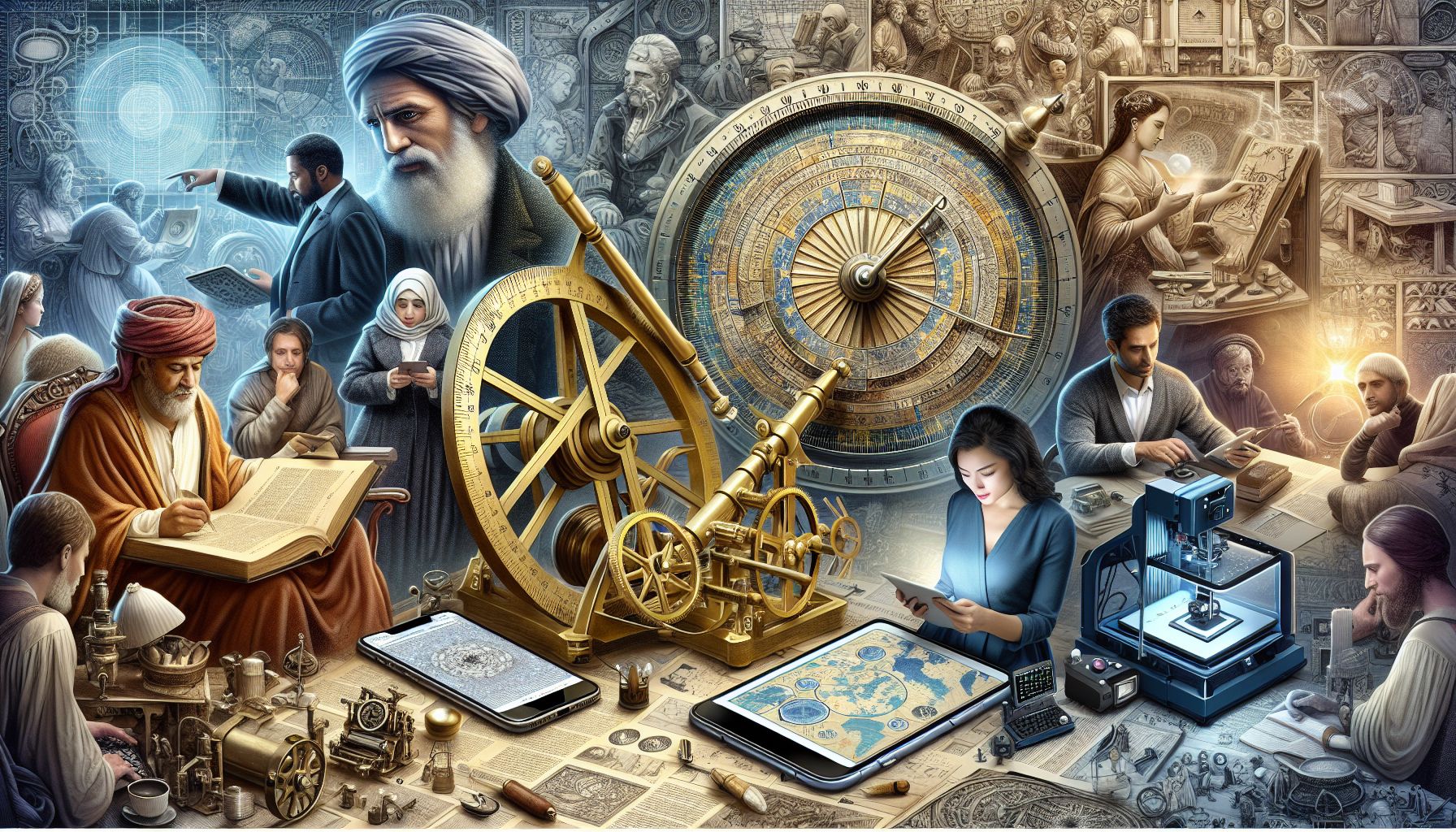📌 Let’s explore the topic in depth and see what insights we can uncover.
⚡ “Ever wondered how ancient Egyptians would react to a smartphone? Dive into the captivating journey of historical inventions and their mind-blowing transformations in modern times.”
In the grand theatre of human history, inventions have consistently played the role of game-changers, shattering established norms and scripting new narratives of progress. From the wheel’s inception to the Internet’s birth, we’ve continuously reshaped our world, sparking revolutions and transformations alike. This blog post invites you to embark on a fascinating journey, diving deep into the mystery of historical inventions and their modern adaptations. In the spirit of curiosity and discovery, we will dig through layers of time, unearthing the roots of some of the most influential inventions. We’ll then trace their evolution through the ages, revealing how they’ve been adapted and reimagined to fit into our modern world. So, buckle up for a trip through time, as we delve into the world of bygone wonders and their contemporary counterparts!
🏺 Ancient Inventions and Their Modern Makeovers

"Old Meets New: Historical Inventions Reimagined"
The seeds of our modern world were sown long ago, in the fertile minds of ancient inventors. Let’s explore some of these groundbreaking inventions and see how they’ve evolved over time.
The Wheel: From Chariots to Hypercars 🎡
The invention of the wheel, dating back to around 3500 B.C., is one of humanity’s most pivotal achievements. Originally used in pottery-making, it wasn’t long before the wheel found its way into chariots, catapults, and myriad other contraptions. Fast forward to the 21st century, and the wheel’s essence remains unchanged. However, it’s now incorporated into feats of engineering like the Bugatti Veyron, which can reach speeds of over 250 mph! Moreover, in the realm of public transport, we’ve seen the evolution from horse-drawn carriages to electric buses and bullet trains.
Paper: From Papyrus Scrolls to e-Books 📜
The ancient Egyptians invented papyrus, an early form of paper, around 3000 B.C. This innovation revolutionized communication, enabling the recording and preservation of knowledge. Today, we have digital versions of books, newspapers, and documents that can be accessed on devices like Kindles and iPads. The essence of paper – a medium for storing and sharing information – continues, but in a completely different form. It’s a testament to the enduring importance of this invention.
Timekeeping: From Sundials to Smart Watches ⌛
The ancient Egyptians also pioneered timekeeping. They used obelisks as sundials, casting shadows to indicate the time of day. Other ancient civilizations, like the Greeks and Romans, developed more sophisticated devices like water clocks and hourglasses. The concept of timekeeping has evolved dramatically since then, with digital watches, atomic clocks, and Internet time servers. However, the underlying principle – dividing the day into manageable segments – remains the same.
📚 Medieval Innovations and Their Contemporary Incarnations
The Middle Ages, often painted as a time of stagnation, were actually a hotbed of inventive activity. Let’s see how these medieval marvels have been reimagined in modern times.
The Printing Press: From Gutenberg to 3D Printing 📰
In the 15th century, Johannes Gutenberg invented the movable type printing press, democratizing knowledge by making books more accessible. Today, we are witnessing another printing revolution with the advent of 3D printing. This technology enables us to create three-dimensional objects from digital designs, transforming industries from healthcare to architecture.
Eyeglasses: From Reading Stones to Virtual Reality 🕶️
The humble beginnings of eyeglasses can be traced back to ‘reading stones’ used in the Middle Ages. These were simply segments of glass spheres that magnified text. In the modern world, we’ve seen the evolution of eyeglasses from simple vision correction devices to complex technology interfaces. Think Google Glass or VR headsets, which provide augmented and virtual reality experiences, reshaping the way we interact with the world.
💡 The Industrial Revolution and Its Digital Descendants
The Industrial Revolution sparked a flurry of innovations, many of which are still integral parts of our lives, albeit in evolved forms.
Steam Engine: From Locomotives to Power Plants 🚂
The steam engine, invented by James Watt in the 18th century, powered the Industrial Revolution. It was used in locomotives, factories, and ships, transforming trade and transportation. Today, the principle of the steam engine – using heat to create mechanical power – is used in thermal power stations. These plants generate electricity for millions of homes and businesses.
The Telegraph: From Morse Code to Instant Messaging 📠
The telegraph, invented in the 19th century, revolutionized long-distance communication. It enabled messages to be transmitted over great distances, using Morse code. In the digital age, we’ve taken this concept to new heights with instant messaging apps like WhatsApp and Telegram. These platforms allow us to send text, voice messages, images, and videos across the globe in real time.
🧭 Conclusion
Our journey through the annals of invention history reveals an intriguing pattern: the essence of many ancient and historical inventions endures, but their forms evolve to suit the changing times and needs. This evolution is often driven by technological advancements and shifting societal paradigms. In the grand scheme of things, inventions are like the rivers of progress, flowing through the landscape of human history. They originate from humble springs, meander through valleys of innovation, and often merge into the vast ocean of modern life. And just like rivers, they sustain life, driving the wheel of civilization forward. So, the next time you marvel at a modern gadget or a technological marvel, remember that it might just be a historical invention in a new guise, carrying forward the legacy of human ingenuity. Here’s to the tireless tinkerers, past, present, and future, who keep the wheels of innovation turning!
🤖 Stay tuned as we decode the future of innovation!
